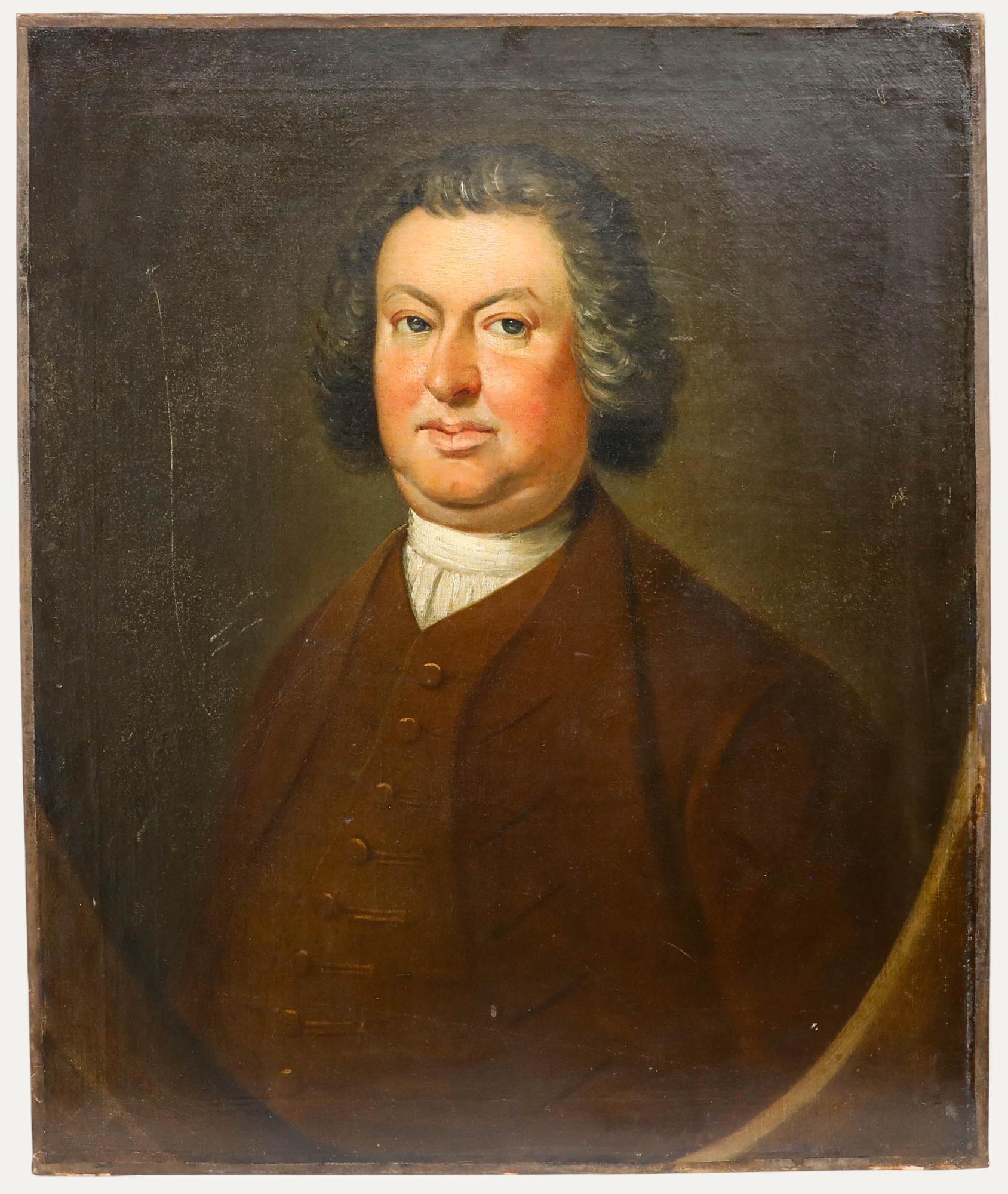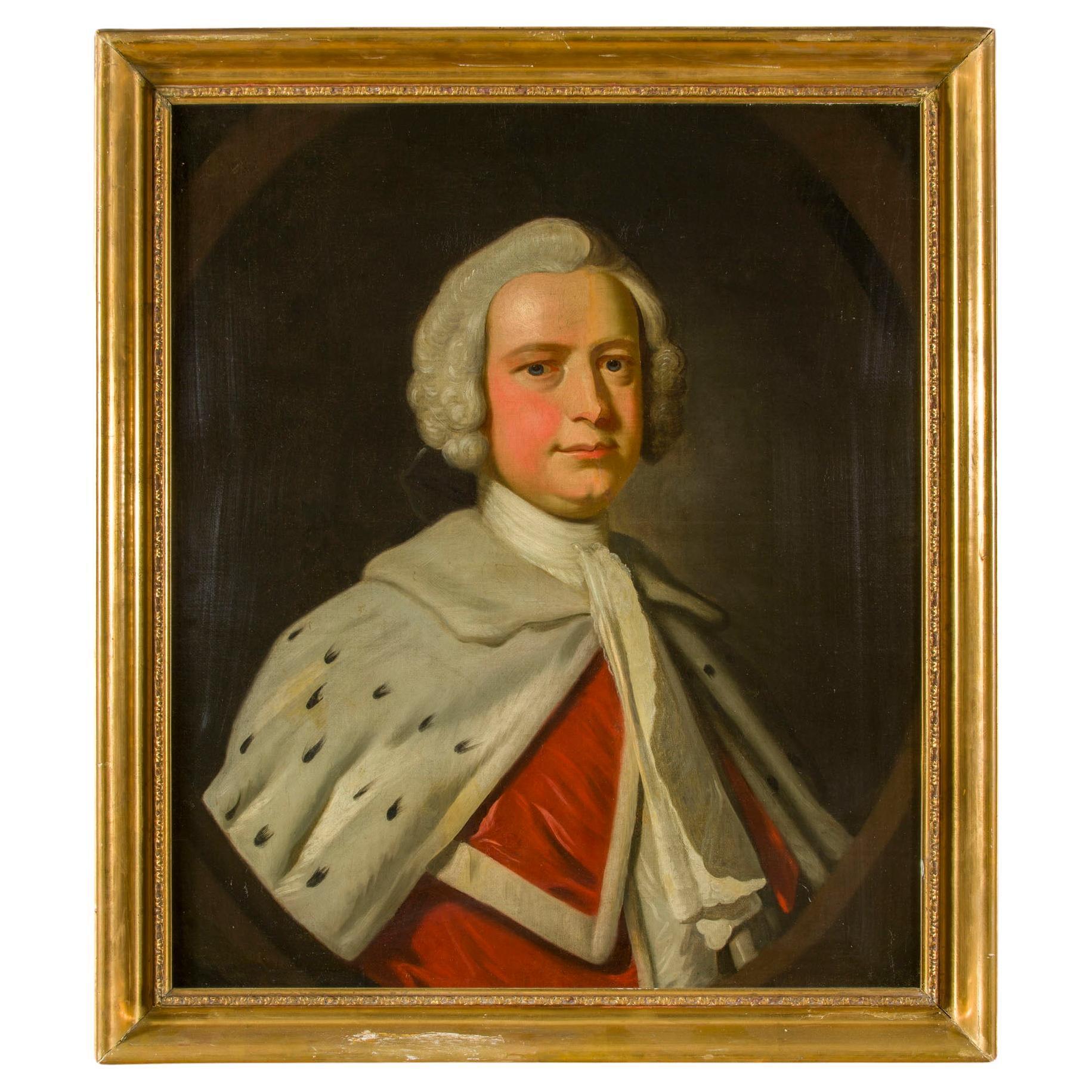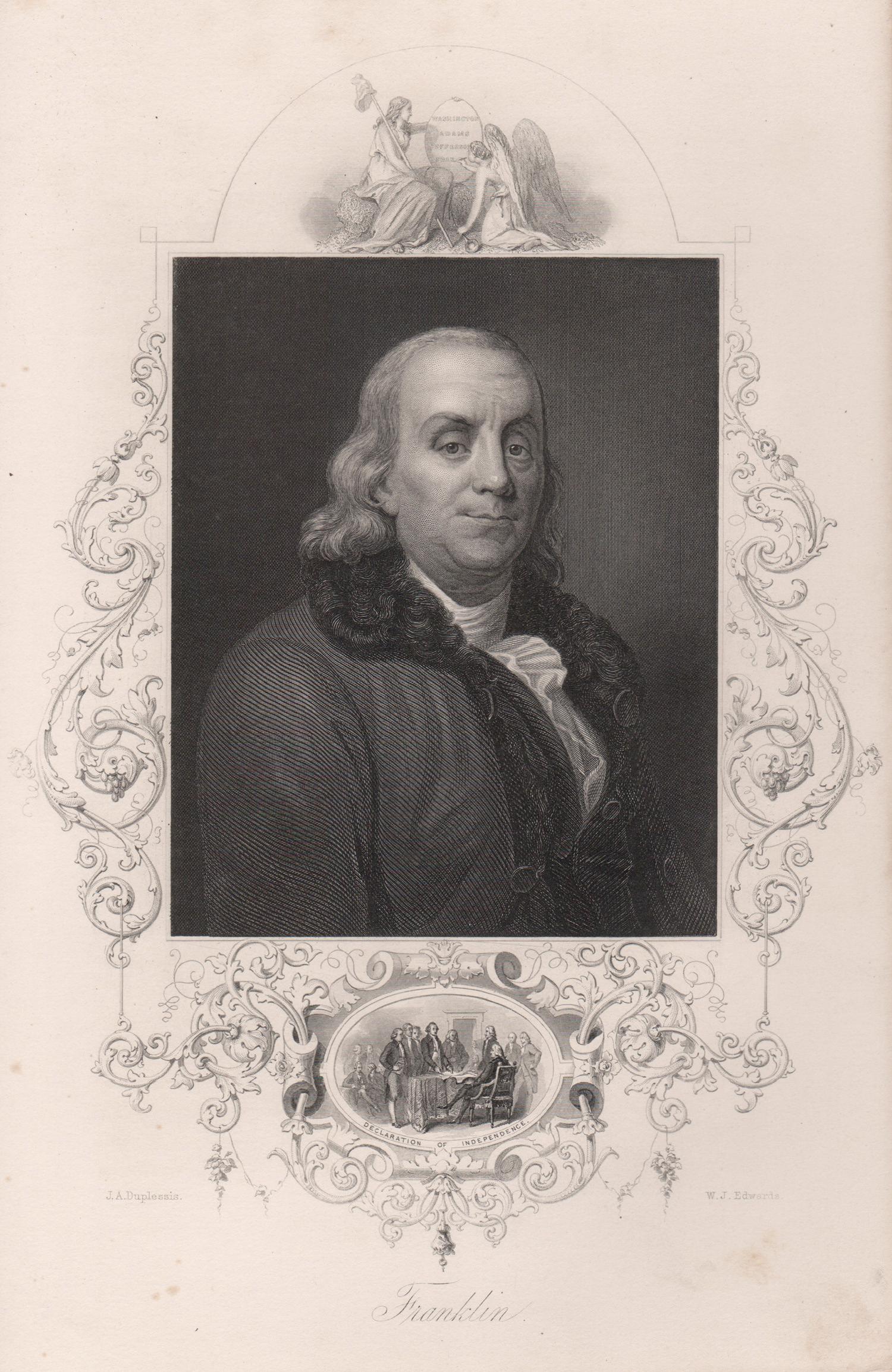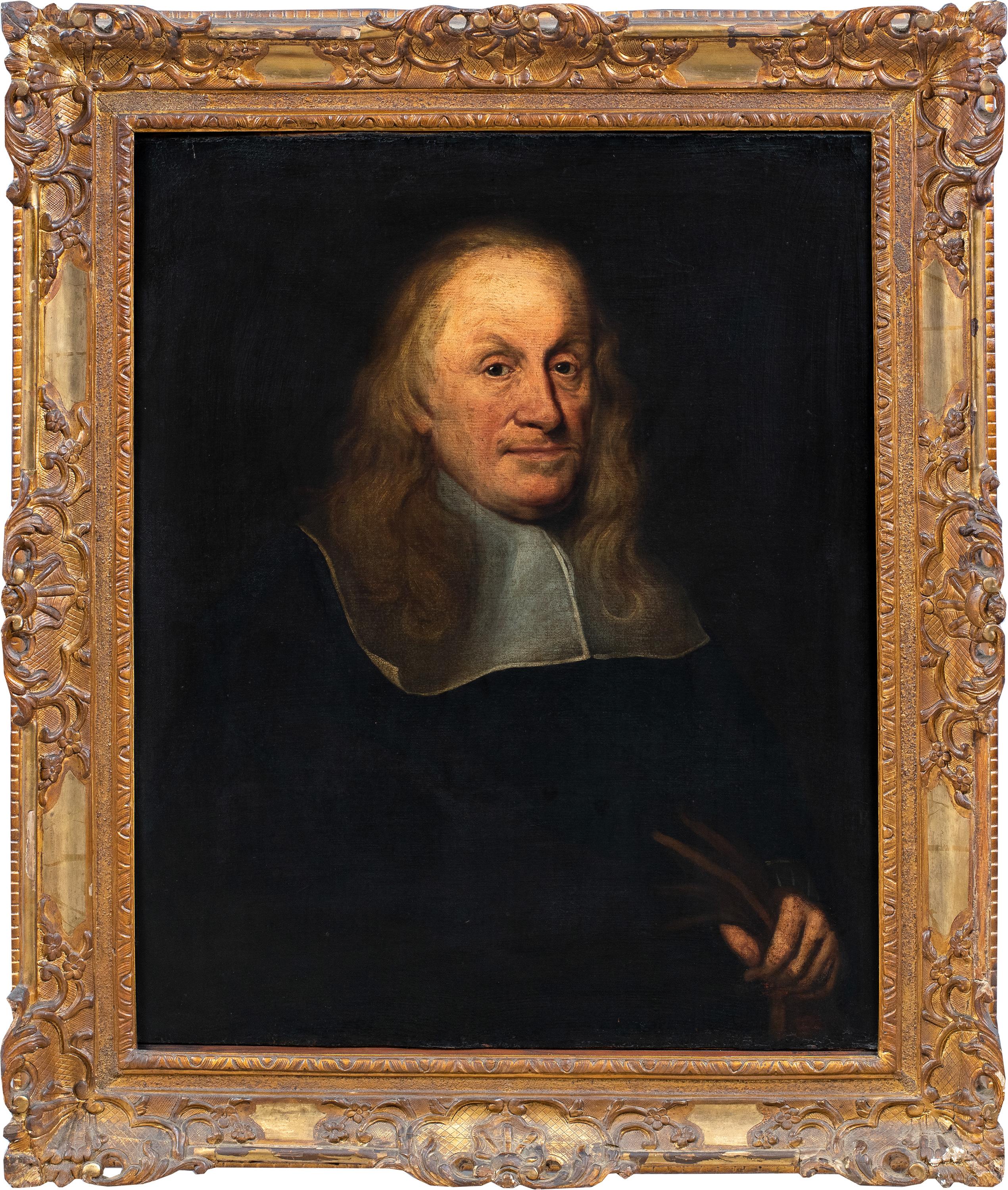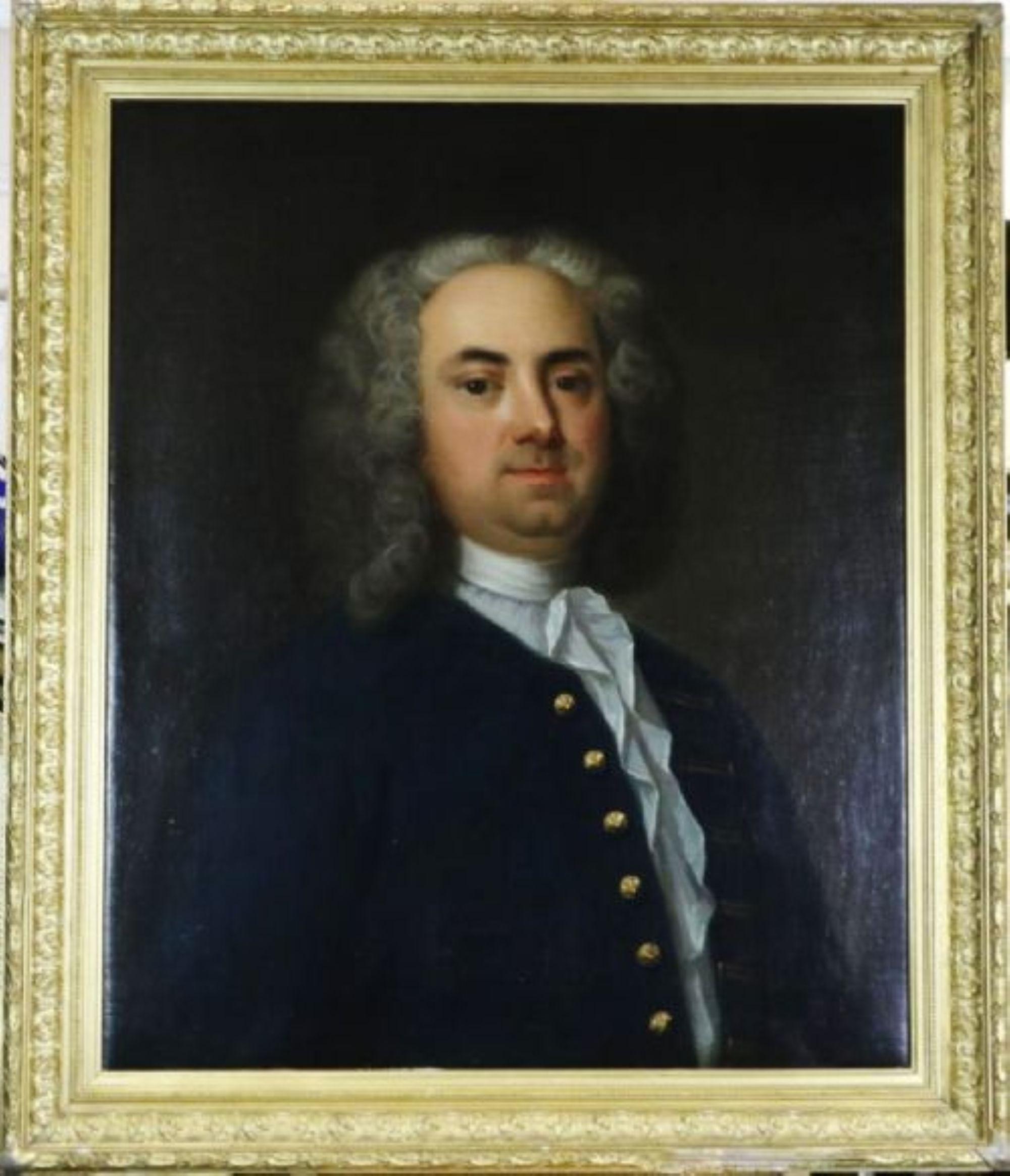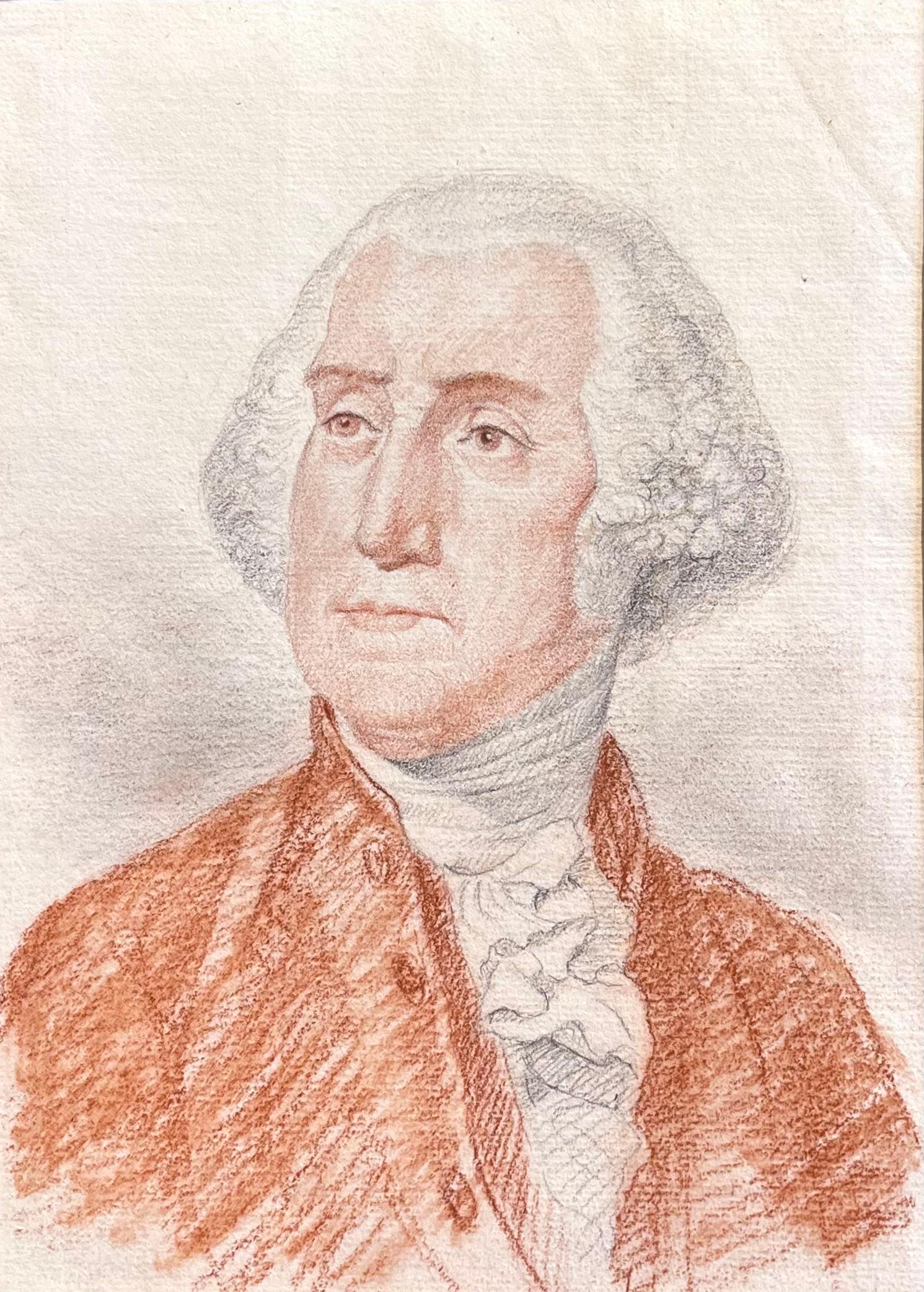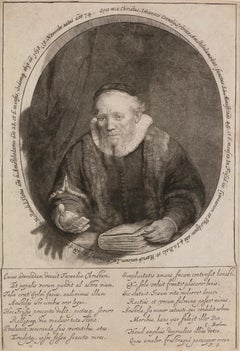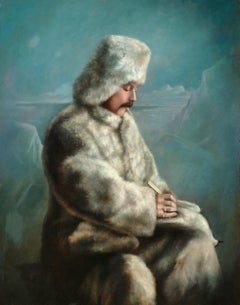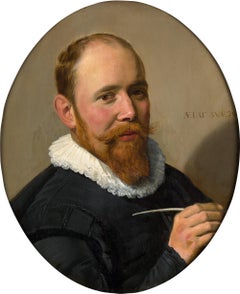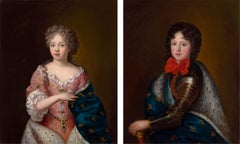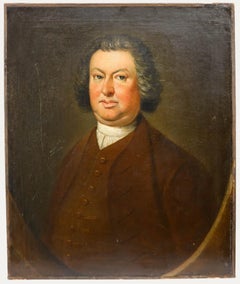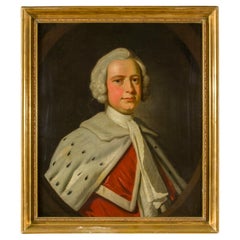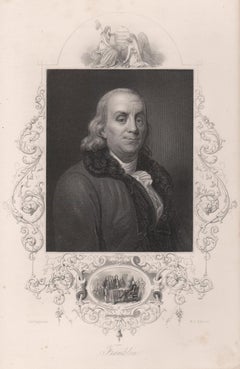Items Similar to Portrait of Benjamin Franklin attributed to Mason Chamberlin
Want more images or videos?
Request additional images or videos from the seller
1 of 8
Portrait of Benjamin Franklin attributed to Mason ChamberlinCirca 1775
Circa 1775
$298,500
£227,407.43
€259,525.66
CA$419,463.14
A$457,141
CHF 242,075.88
MX$5,490,745
NOK 3,064,734.13
SEK 2,817,721.57
DKK 1,938,368.98
About the Item
Attributed to Mason Chamberlin
1729-1787 British
Portrait of Benjamin Franklin
No visible signature
Oil on canvas
This exceptional portrait of Benjamin Franklin represents one of the most significant rediscoveries in American portraiture history, attributed to the renowned British artist Mason Chamberlin and dating to circa 1775. Among only 36 known oil portraits documenting Franklin's celebrated life, this work captures the statesman during his final diplomatic mission to London, depicting him in his characteristic brown suit and powdered wig before he abandoned such formal attire in 1776. The portrait's provenance and historical context make it an extraordinarily rare treasure from the founding era of American independence.
The composition presents Franklin seated at his study table in the identical setting Chamberlin employed for his acclaimed 1762 portrait, now housed in the Philadelphia Museum of Art. The artist masterfully captures the thirteen years that had elapsed between sittings, incorporating Franklin's additional wrinkles and the spectacles placed near an open book that reflect his matured wisdom as a diplomat. The brushwork demonstrates Chamberlin's characteristic refined technique, with the subject's contemplative expression conveying both intellectual gravitas and the weight of his diplomatic responsibilities during this pivotal moment in Anglo-American relations.
Mason Chamberlin established himself as one of London's most sought-after portraitists during the Georgian era, serving as a founding member of the Royal Academy of Arts in 1768. His 1762 portrait of Franklin, which depicted the polymath surrounded by his scientific instruments, became one of the most iconic representations of the American philosopher and was reproduced as woodcuts that Franklin himself distributed to friends. Chamberlin's ability to capture both physical likeness and psychological depth made him the preferred choice for prominent figures of his era, including members of the British aristocracy and distinguished visitors to London.
The painting's fascinating provenance includes more than a century in Italian collections, where it was mistakenly attributed to Pietro Longhi by art historian Giuseppe Fiocco in the early 20th century. However, the brushwork, canvas and painting technique are unmistakably 18th-century English, consistent with Chamberlin's documented methods. The historical timing supports the attribution, as Franklin arrived in London in 1774 for his final diplomatic mission and fled in 1775 to avoid arrest, which would explain why he never retrieved this completed portrait from the artist's studio.
Circa 1775
Canvas: 45 3/8" high x 39 1/8" wide (115.25 x 99.38 cm)
Frame: 54" high x 47 7/8" wide (137.16 x 121.60 cm)
Provenance:
Private collection, Italy
Collection of Don Ermanno Volta (1925-2016)
M.S. Rau, New Orleans
- Attributed to:Mason Chamberlin (1727 - 1787)
- Creation Year:Circa 1775
- Dimensions:Height: 54 in (137.16 cm)Width: 47.88 in (121.62 cm)Depth: 2.28 in (5.8 cm)
- Medium:
- Movement & Style:
- Period:
- Condition:
- Gallery Location:New Orleans, LA
- Reference Number:Seller: 31-89711stDibs: LU18616443902
About the Seller
5.0
Vetted Professional Seller
Every seller passes strict standards for authenticity and reliability
Established in 1912
1stDibs seller since 2013
20 sales on 1stDibs
Typical response time: 3 hours
- ShippingRetrieving quote...Shipping from: New Orleans, LA
- Return Policy
More From This Seller
View AllJan Cornelis Sylvius, Preacher by Rembrandt Van Rijn
By Rembrandt van Rijn
Located in New Orleans, LA
Rembrandt van Rijn
1606–1669 Dutch
Jan Cornelis Sylvius, Preacher
New Hollstein Dutch and Flemish (Rembrandt) 235, state 2/2
Bartsch 280
Printed by Rembrandt
Signed and dated "Rem...
Category
17th Century Old Masters Portrait Drawings and Watercolors
Materials
Paper, Etching
Portrait Of Dr. Frederick A. Cook By Albert Operti
Located in New Orleans, LA
Albert Ludwig Operti
1852-1927 Italian-American
Portrait of Dr. Frederick Albert Cook
Oil on canvas
This highly rare portrait of the important Polar explorer, Dr. Frederick Albert Cook, is the work of American artist Albert Ludwig Operti. Renowned in the late 19th and early 20th centuries for his paintings of exploration, namely Arctic scenes, Operti was the only artist to accompany Robert Peary...
Category
20th Century Realist Portrait Paintings
Materials
Canvas, Oil
Portrait Of A Gentleman By Frans Hals
Located in New Orleans, LA
Frans Hals
1582-1666 Dutch
Portrait of a Gentleman
(possibly Theodore Blevet)
Oil on panel
“Frans Hals is a colourist among the colourists...Frans Hals must have had twenty-seven blacks...
Category
17th Century Old Masters Portrait Paintings
Materials
Oil, Panel
Price Upon Request
Pair of Royal Portraits of the Duke and Duchess of Burgundy
By Pierre Gobert
Located in New Orleans, LA
Follower of Pierre Gobert
18th century French
The Duke and Duchess of Burgundy
Oil on canvas
Refinement and intricacy characterize these royal portra...
Category
18th Century Portrait Paintings
Materials
Canvas, Oil
Tri-Directional Portrait Commemorating the Russo-Turkish War
Located in New Orleans, LA
Austrian School
18th Century
Tri-Directional Portrait Commemorating the Russo-Turkish War
Oil on wooden strips
This extraordinary tri-directional portrait exemplifies the rare innovation known as a triscenorama, capturing a pivotal diplomatic moment through ingenious artistic technique. Employing triangularly cut wooden strips, this remarkable work simultaneously depicts three imperial figures central to the Russo-Turkish War of 1735-1739: Empress Anna Ivanovna Romanova of Russia when viewed directly, Holy Roman Emperor Charles VI from the left and Ottoman Sultan Mahmud I from the right, commemorating the Treaty of Nissa that concluded this significant European conflict.
The portrait utilizes an exceptionally rare optical technique that predates modern movable imaging technology. When observed from different angles, the painted triangular wooden strips create a transformative effect, revealing entirely different imperial portraits as the viewer shifts position. The precision required to execute such a work demonstrates remarkable technical mastery, as the artist had to conceptualize three distinct portraits as well as the meticulous arrangement of the panels. This sophisticated manipulation of perspective creates an interactive viewing experience considered revolutionary for its time.
Almost certainly created by an Austrian artist, this diplomatic artwork likely served as a commemorative piece marking the Treaty of Nissa, signed in September 1739. The treaty concluded Russia's ambitious campaign to secure access to the Black Sea while countering Ottoman raids in Ukraine and the Caucasus regions. Given its exceptional quality and historical significance, this portrait was possibly commissioned by Emperor Charles VI himself, potentially serving as a diplomatic gift to either Empress Anna or Sultan Mahmud I during the treaty negotiations.
Under Empress Anna's leadership, Russia sought to counter devastating raids from Ottoman allies, particularly the Crimean Tatars...
Category
18th Century Old Masters Portrait Paintings
Materials
Wood, Oil, Wood Panel
The Musician
Located in New Orleans, LA
Alfred Weber
1859-1922 I Swiss
The Musician
Signed “Alfred Weber” (lower left)
Oil on panel
This work by Swiss ecclesiastical genre painter Alfred Weber, best known for his humorous and meticulously detailed paintings, features a cardinal enjoying his leisure time. Weber's talent for rendering opulent interiors and his keen sense of comic narrative are evident in this painting. The cardinal, looking blissfully content, sits in his lavish living space playing the violin, accompanied by a flutist.
Alfred Charles Weber...
Category
Late 19th Century Academic Figurative Paintings
Materials
Oil, Panel
You May Also Like
Early 19th Century Oil - Portrait of George Tomlinson
Located in Corsham, GB
This formal portrait depicts a distinguished gentleman from the early 19th century, rendered in the classical style typical of the period with careful attention to facial features an...
Category
Early 19th Century Portrait Paintings
Materials
Oil
Thomas Hudson Style 18th Century English Portrait
By Thomas Hudson
Located in Roma, IT
Important English school painting in the style of the great artist Thomas Hudson (Devonshire 1701 - Twickenham 1779)
It depicts the portrait of Harry Gray (1715-1768), 4th Earl of St...
Category
1750s Old Masters Portrait Paintings
Materials
Canvas, Oil
Benjamin Franklin, 19th century American political portrait engraving print
Located in Melbourne, Victoria
Benjamin Franklin
Steel-engraving by WJ Edwards after Joseph Siffred Duplessis. C1860. . Vignette below image titled 'Declaration of Independence'.
When Franklin arrived in France ...
Category
Mid-19th Century Naturalistic Portrait Prints
Materials
Engraving
Nicolaes Maes workshop (Baroque Dutch)- 17th century figure painting - Portrait
Located in Varmo, IT
Nicolaes Maes (Dordrecht 1634 - Amsterdam 1693) circle of - Portrait of a Gentleman.
81 x 65 cm unframed, 100.5 x 83.5 cm with frame.
Antique oil painting on canvas, in a carved an...
Category
17th Century Old Masters Figurative Paintings
Materials
Canvas, Oil
$7,179 Sale Price
25% Off
18th century antique portrait Edmund Hoyle Circle of James Latham, Edmund Hoyle
Located in York, GB
18th century Bust portrait of a gentleman in a blue coat with gold buttons (Said to be Edmund Hoyle, inventor of Whist) oil on canvas
circle of James Latham. Housed in a gilt frame the size overall is 71 x 84 cm (28 x 33 inches approx) whilst the painting is
56 x 69 cm ( 22 x 27 inches approx) unsigned
The overall condition is very good having had some restoration. The painting has been relined, cleaned and re varnished.
There has been some strengthening/overpainting. There is a Rectangular patch repair along lower edge, centre, reverse approximately 5 x 7cm with associated retouching to front,all essentially done sympathetically.
some fine stable craquelure throughout. Some minor self coloured losses to frame. None of the above detracting from
a very attractive portrait.
Edmond Hoyle
Edmond Hoyle
English card game authority, "the Father of whist"
Born 1672 England Died 29 August 1769 (aged 96–97)
London, England
Edmond Hoyle (1672 – 29 August 1769)[1] was a writer best known for his works on the rules and play of card games. The phrase "according to Hoyle" came into the language as a reflection of his generally perceived authority on the subject
James Latham
James Latham was born in Thurles, County Tipperary, Ireland and possibly related to the family of Lathams of Meldrum and Ballysheehan. After some practice of his art, Latham studied for an academic year in Antwerp (1724–25) where he became a Master of the Guild of St Luke. He returned to Dublin by 1725, and may have visited England in the 1740s, as the influence of Joseph Highmore, as well as Charles Jervas and William Hogarth, is evident in his work of this period. Anthony Pasquin memorably dubbed Latham "Ireland's Van Dyck". Latham died in Dublin on 26 January 1747.
Several of James Latham's portraits are in the National Gallery of Ireland collection in Dublin; one is of the famous MP Charles Tottenham (1694–1758) of New Ross, Co. Wexford, "Tottenham in his Boots" (Cat. No.411) and a second is a portrait of Bishop...
Category
Mid-18th Century Old Masters Portrait Paintings
Materials
Oil
$3,823 Sale Price
20% Off
Free Shipping
Portrait of President George Washington
Located in Fredericksburg, VA
This early 19th-century French School portrait of President George Washington, rendered in pastel and graphite on paper, exemplifies the European admiration for the American leader. ...
Category
Early 19th Century Portrait Paintings
Materials
Paper, Oil Pastel, Graphite
